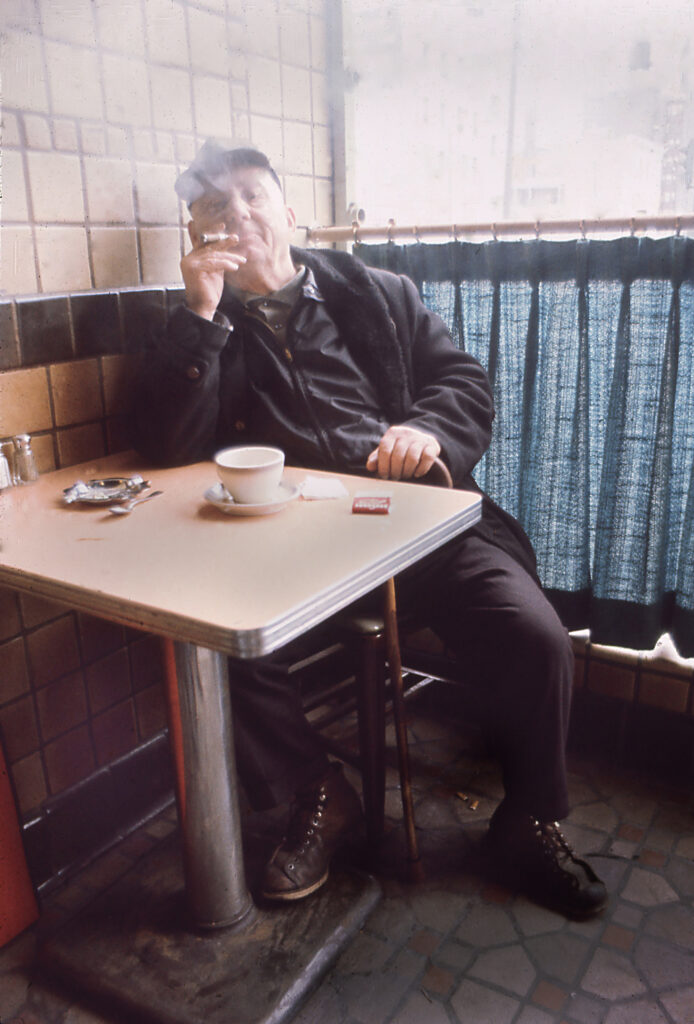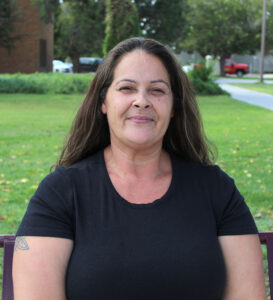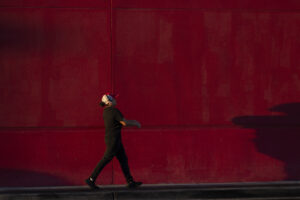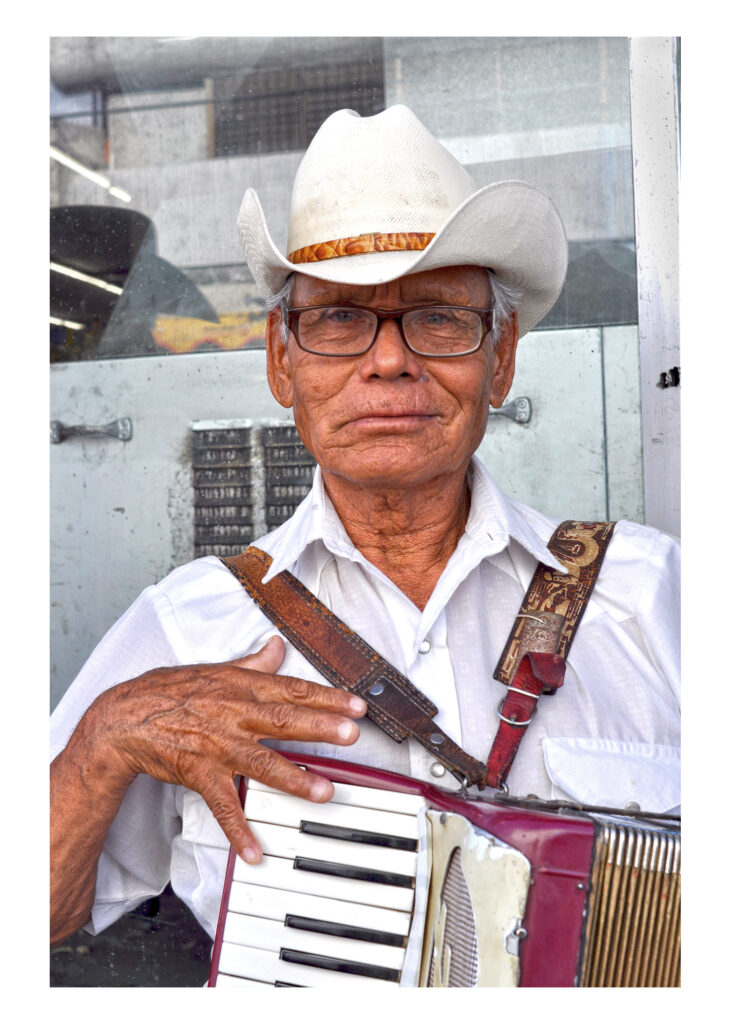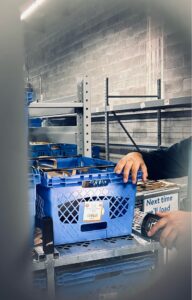Matthew Falkenthal’s Photojournalism Paper

Photographed by: David La Chapelle
Journalism has many components that come together on media platforms such as broadcast, online, or physical copy. With cameras and people’s instinct toward visual stimulation, photography is one of the most important in the field. Photojournalism is the intentional use of photographs in which the subject matter is portrayed visually, to tell the story. Rather than traditional journalism, consisting of written text, photojournalism takes on a visual approach with a small amount of text. Collections of photographs are seen worldwide, providing a deep power in people’s lives as catalysts of emotion, thoughts, and actions among individuals. Photojournalism has played a part in many social issues, wars, civil unrest, natural disaster relief, etc., through the power photography has on humans.
Throughout the past few decades, journalism has seen massive changes in the way we as viewers consume content. Global shifts toward the advancement of digital technologies have created a steady decline in demand for physical media (newspapers, magazines, etc.). Due to a minimal/non-existent need for newspapers, many question the existence of a profession in photojournalism. Despite the disappearance of newspaper demand, digital media has taken over the world population as the dominant medium in media. Thus, major news publications are completely online and/or broadcast-oriented with a constant need for visual components. Thus, careers in photojournalism remain in demand, possibly more than ever. As jobs fluctuate in a modern economy, around half of professional photographers work freelance through multiple organizations. This provides the opportunity for professional work through various reputable organizations that provide broad platforms for work to be recognized. Many believe that due to the switch from press print to digital, the need for professional photography is dying. This is due to the observance of anyone with a smartphone can capture imagery, but in similarity, “anybody with a pencil can’t be a great writer, anybody with an iPhone is not necessarily going to be a great photographer.” (Lachowskyj, LensCulture) Therefore, the need for individuals who hold the knowledge behind creating photography that captivates viewers remains strong. Shifts in digital technologies allow for images to be instantly captured, transferred to computers, processed, and shared with publications. As a result, a remote network where organizations always have access to photographers persists as an industry dominant with some working as in-house photographers as well. Currently, photojournalism is one of the most in-demand photography professions, either in-house or freelance. (Koski, 2022) Photojournalism is a profession fueled by the constant need for visual media produced by professionals no matter the existence of “ease of capturing imagery” through smartphones.
Because of the many doubts people have about the profession, questions arise on how one can make a living pursuing photojournalism in current news and corporate industries. From a personal standpoint, making a living in these industries is very complex. Over the years of personal photography experience and hearing from people within the field, maintaining consistency in shooting, producing, and sharing your work is vital. This means taking the time to shoot throughout your day through personal insight into your surroundings/activities. Allowing for further skill advancement and content to produce and share. Photographs you produce will not get recognition if you don’t share them on a platform available to the masses. This can take the form of a website, photo-sharing platform, or most importantly, social media. Social media is one of the best forms of networking and sharing creative content in modern-day society. Prioritizing a social network and online presence will allow for opportunities to manifest through people/organizations that might come across your work. Starting small is always best and might come in the form of doing work for local/niche publications, that then allow for beginning photojournalists to gain recognition. Determining how you grow and whether larger opportunities come in your direction, mostly through word of mouth or publications you make as a beginner. These opportunities might not offer much compensation in terms of pay, but persistence and growth in creative direction will lead to higher-paying opportunities. I prioritize these values in my work and always look and offer myself toward opportunities when they arise, resulting in recognition and pay.
Modern journalism has been a profession in society since the beginning of the 20th century, resulting in many respected photojournalists. The early 20th century (the 1900s-1930s) produced notable figures such as Walker Evans, Dorothea Lange, and Arthur Rothstein who gained recognition through their work showing urban and rural poverty during the Depression. (Cleveland Museum of Art, 2017) The 1930s-1950s resulted in photographers such as Robert Capa, Margaret Bourke-White, and Henri Cartier-Bresson who produced notable work in war, political events, and street photography. Later mid-century eras (1960s-1980s) saw more artistic and post-modern societal changes resulting in notable figures like Juergen Teller, Wolfgang Tillmans, and Corinne Day. Lastly, from the 1990s through the present day, we’ve seen various notable news photographers like Steve McCurry, and fashion photographers like David LaChapelle, and Steven Meisel. Fashion photography in journalism began in popularity during the late 1980s-1990s.
1900s-1930:
Walker Evans:

Couple at Coney Island, New York (1928) Source: The MET Museum (https://www.metmuseum.org/art/collection/search/265145 )
I like this photo because it captures something that would be viewed as simple by people passing by, but Evans viewed it as artistic and captivating. The light source is natural outside light coming from the sun above. Evans captured the decisive moment because of the exact placement the couple are in with each other’s arms around one another as they look out into Coney Island. This creates a photo that ignites warm-hearted emotion among viewers which makes it a great photograph. Evans captured this image by simple street photography, capturing people as he walked around the area during their raw and deconstructed actions.
Dorothea Lange:

Migrant Mother, Nipomo, Calif. (1936) MoMA Source: NY Times (https://www.nytimes.com/2018/11/28/lens/dorothea-lange-migrant-mother.html )
This photo interests me because it fully captures the raw emotional state of the livelihoods of poor migrants during the great depression of the early 1900s. The light source is natural light, caused by the sun, filtered through the shade of their tent. The photo perfectly depicts the decisive moment, as her oldest children lean and look away from the camera while she touches her face, holding her baby, and ponders into the distance. Resulting in an iconic photograph that captures a unique depiction of their life in a way that has made the photo so “great” that it is one of the most well-known photographs. Lange gained access to take the image while she was on assignment working for the Federal Farm Security Administration.
Arthur Rothstein:

Dust Storm, Cimarron County, Oklahoma (1936) Source: Holden Luntz Gallery (https://www.holdenluntz.com/artists/arthur-rothstein/dust-storm-cimarron-county-oklahoma/ )
I like this image because it depicts the suffering endured by those affected by natural disasters, like the Dust Bowl captured in the image. The light source is a dim natural light provided by the sun shining through a thick dust storm. Rothstein captures the decisive moment as a man and his children walk by a structure that’s been buried by dust in the middle of a storm. This photo is considered “great” because it shows the severity of the Dust Bowl and what rural farmers had to endure during a time of drought, destruction, and poverty. Rothstein captured the photo while reporting for the Resettlement Administration.
1930s-1950s:
Robert Capa:

U.S. Troops “assault” Omaha Beach during D-day landings. Normandy, France, June 6, 1944, Source: Magnum Photos (https://www.magnumphotos.com/photographer/robert-capa/ )
I like this photo because even though it’s not clear and still, it provides the feeling of war and going into battle to viewers. The light source is natural light coming from the sun and reflecting off the ocean and clouds. Capa captures the decisive moment as soldiers arrive on the beach of Normandy, France, and charge through the ocean to go into battle. What makes this photo “great” is the drama behind it, as soldiers fight their way through ocean currents the photo captures it through an unconventional shaky photo. Capa gained access to capturing the photo by putting himself with the soldiers as they fought through the ocean.
Margaret Bourke-White:

Member of the Sind Muslim Women’s National Guard during marching practice. Karachi, Pakistan, 1947. Credit line: The LIFE Magazine Collection, 2005, Source: International Center of Photography (https://www.icp.org/browse/archive/objects/pakistani-members-of-the-sind-muslim-womens-national-guard-during-marching )
I like this image because it portrays a sense of empowerment and freedom that we are not used to seeing in a Middle Eastern country like Pakistan. The light source is natural light from the sun, probably at around sunrise or sunset since it’s facing directly at the subjects instead of above. The women photographed mid-marching practice and the wind blowing against them makes the perfect decisive moment for the photographer, which White successfully captures. This photo is “great” because the women are captured mid-march with a center figure pictured holding a flag as the wind blows against them, which creates a sense of power for viewers. White was able to get access by attending their practice and placing herself around them as they got into formation.
Henri Cartier Bresson:

A man sits with a cat. Downtown Manhattan, New York, USA. (1947) Source: Magnum Photos (https://www.magnumphotos.com/photographer/henri-cartier-bresson/ )
I like this photo because it’s taken from an angle that offers more of a “fly on the wall” type of portrayal. The light source is natural light, focused through an alleyway between two buildings to create the contrasts of light. Bresson captures the decisive moment, as the man is perfectly sat on the curb looking down at a cat that has sat in front of him. This makes the photo “great” as the man is not petting the cat but rather looking at it in a way that results in a lonely or somber feeling. Due to the “fly on the wall” approach, Bresson gained access to be able to capture this image by closely looking at his surroundings and making sure to remain unseen/heard while setting up the shot.
1960s-1980s:
Juergen Teller:

Fashion designer Vivienne Westwood poses in front of a door. (2017) Source: The Cut (https://www.thecut.com/2017/09/juergen-teller-vivienne-westwood-book.html )
Fashion photography is my favorite kind of photography, which is why I chose this photo because I like the simplicity in the setup of the photo but the complexity behind the subject’s physical appearance. The source of light is a flash used with the camera to create a burst of light, highlighting Westwood’s face. The decisive moment is captured as Teller captures her in a casual setting, probably as they are conversing, in which he takes the photo capturing Westwood in a direct stare into the camera. This photo is “great” because of the simplicity of capturing the photo with a simple flash and background allows for Westwood’s presence to be the center of attention. Teller is a well-known fashion photographer who worked closely with Westwood over the years, eventually photographing her regularly, thus gaining access to taking this image.
Wolfgang Tillmans:

“Love (Hands in Air)”, 1989, Source: Artspace (https://www.artspace.com/magazine/interviews_features/qa/interview-wolfgang-tillmans-classic-photography-seemed-so-remote-so-irrelevant-to-me-it-just-56628 )
I like this photo because I think it captures the raw social aspect of 1980s club culture, throughout Europe and America. The source of light comes from a flash on the camera with club lights serving as backlight in the background. Tillmans makes the decisive moment when people are dancing in a club and touching each other, capturing a raw and un-staged photo of the couple. This photograph is “great” because the subjects are mid-movement captured in a vulnerable sense while still having fun in a club, thus creating the raw aspect of it. Tillmans gained access by putting himself in the middle of a packed club and shooting the people around him.
Corinne Day:

Model Kate Moss smokes a cigarette while sitting against a wall. (1990) Source: Corinne Day (https://www.corinneday.com/sets/96/ )
I chose this image because the photographer Corinne Day, took the unconventional approach in fashion photography. The light is natural light from the sun above with the wall providing contrast with model Kate Moss’s shadow creating contrast. The decisive moment was when Day decided to capture Moss while she was in a relaxed state up against an un-staged background. The greatness of this photo is because of its unconventional use in fashion as it’s deconstructed and raw, as Day was known for. Day gained access by creating a relaxed environment for the subjects.
1990s-Present:
Steve McCurry:

Camels near Oil Fields. Al Ahmadi, Kuwait, 1991. Source: CNN (https://www.cnn.com/style/article/steve-mccurry-animal-photography/index.html )
I chose this photo because of the shocking contrast it brings to the viewer, as camels are pictured walking along burning oil fields which the animals often call home. The source of light comes from the glow of massive fires in the background. McCurry makes the decisive moment as Camels flee burning oil fields which was ordered by Saddam Hussein, former Iraq president. The greatness of the photo comes from the portrayal of ecological tragedy and the direct effect on animals, portrayed through the image in direct contrast. McCurry gained access by putting himself in the dangerous oil fields that were being attacked to capture the image.
David LaChapelle

Deborah Harry, New York, USA (1993) Source: (https://www.davidlachapelle.com/photographs-portraits?pgid=klb3191g-9993e9bd-35d1-4f7c-9b2c-5051aef506c1 )
I like this photo because of the over-staged and abstract approach to the photograph through a dramatic background, subject, and use of bright colors. The light source is natural light with some light reflectors to highlight the subject. LaChapelle gets the decisive moment as the model is perfectly posed against the car which makes her seem more natural and not over-compensated in trying to portray the scene. What makes this photo “great”, is the seemingly perfect staging of the background and model that creates contrast and questioning of the implied story behind the photo. LaChapelle gained access to be able to capture this photograph because of relationships with celebrities and publications through the abstract themes in his work.
Steven Meisel

“Super Mods Enter Rehab” Vogue Italia, July 2007
Meisel’s work for publications like Vogue Italia is usually very dramatic and captivating with its themes and portrayals, which is what I like about this photo. The source of light is both natural light from the windows and overhead lights inside the rehab facility. Meisel captures the decisive moment when his models and team are acting out the scene and captures the most dramatic moment of staff struggling with the models. This photo is considered “great” as it portrays a real issue and struggles that many models face in the industry, which the public doesn’t often see. Supermodels going to rehab usually become public knowledge after the fact, and Meisel plays into the unknown and overplayed drama behind what happens. Through Meisel’s recognition and success in the fashion world, he was able to gain access to photoshoots like this because of his status and publications representing him.
When producing in the field of Photojournalism, the code of ethics is something to always remember and adhere to. There are many specific rules and aspects you should avoid in your work to maintain integrity. Essentially, photojournalists should always uphold accuracy and comprehensiveness in the representation of their subjects and avoid intentional contributions in altering or influencing events. Avoid manipulation by staged photo opportunities or accept gifts/favors from those who pose a possibility of seeking influence coverage. Treat other journalists with respect and don’t intentionally sabotage or harass colleagues in professional interactions. Lastly, treat all subjects with respect and dignity, especially in sensitive contexts, and avoid any possible stereotypes that can be shown in your work.
References:
Lachowskyj, C. (n.d.). The state of photojournalism today – interview with Maryanne Golon by Cat Lachowskyj. LensCulture. https://www.lensculture.com/articles/maryanne-golon-the-state-of-photojournalism-today
Koski, N. (2023, August 3). 25 photography careers you can make money with. CreativeLive Blog. https://www.creativelive.com/blog/25-photography-careers-you-can-make-money-with/#:~:text=Photojournalism%20is%20one%20of%20the,events%20to%20accompany%20news%20stories.
From Riches to Rags: American photography in the depression. Cleveland Museum of Art. (n.d.). https://www.clevelandart.org/exhibitions/riches-rags-american-photography-depression
Estrin, J. (2018, November 28). Unraveling the mysteries of Dorothea Lange’s “migrant mother.” The New York Times. https://www.nytimes.com/2018/11/28/lens/dorothea-lange-migrant-mother.html
